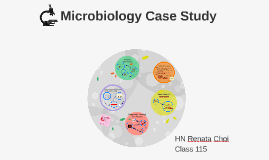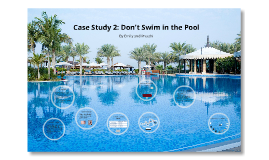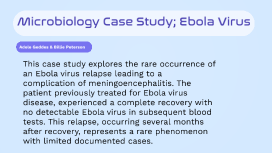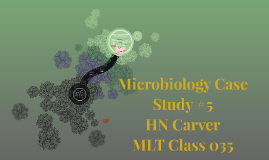Microbiology Case Study
Transcript: Outline of disease process - 3min Techniques used in the case study to identify the pathogen - 4min technique 1 technique 2 The microbial infection described in the case study primarily affects the central nervous system (CNS), leading to meningoencephalitis, while the immune system plays a role in attempting to control the infection, although not entirely successful in preventing relapse. The patient's second admission reveals symptoms indicative of meningoencephalitis, including severe headache, neck stiffness, photophobia, altered consciousness, and neurological deficits such as double vision and slurred speech. Confirmatory laboratory tests detect Ebola virus RNA at a high level in the cerebrospinal fluid (CSF), signifying direct involvement of the CNS. Imaging studies further support this diagnosis by revealing abnormal leptomeningeal enhancement in various regions of the CNS (Dando et al., 2014). The disease pathogenesis outlined in the case study illustrates the intricate interplay between Ebola virus infection and the host immune response. Following initial infection, characterized by high viral load and acute systemic symptoms, the virus rapidly replicates, targeting immune cells and endothelial cells, causing widespread tissue damage. Despite receiving supportive care and antiviral treatments, the patient experiences ongoing symptoms during recovery, suggesting persistent immune activation and tissue repair processes. Months later, a severe relapse occurs, indicating viral persistence in immune-privileged sites and highlighting the virus's ability to evade immune surveillance. The immune response, characterized by the production of Ebola virus-specific antibodies, may not be sufficient to clear the virus completely, contributing to prolonged illness and potential relapse (Jacob et al., 2020). Description of Ebola virus 1 The Ebola virus is part of the Filoviridae family and Ebolavirus genus 2 It has a unique filamentous structure surrounded by a lipid membrane. Its genetic makeup includes a single-stranded RNA genome that encodes essential cell entry proteins. 3 Strict containment measures are vital due to this virus's high pathogenicity, usually in biosafety labs. 4 5 Specialised facilities use primate or human cell lines for cultivating the virus for research and potential treatments. (Bharat et al., 2012) Treatment recommendation - 1min Microbiology Case Study; Ebola Virus Adele Geddes & Billie Peterson This case study explores the rare occurrence of an Ebola virus relapse leading to a complication of meningoencephalitis. The patient previously treated for Ebola virus disease, experienced a complete recovery with no detectable Ebola virus in subsequent blood tests. This relapse, occurring several months after recovery, represents a rare phenomenon with limited documented cases. Case Presentation Pauline Cafferkey, a 39-year-old female nurse from Scotland, contracted Ebola while caring for patients in Sierra Leone in 2014. Diagnosed upon her return to Glasgow, she experienced symptoms including severe respiratory distress, mucositis, erythroderma, and diarrhoea. There she received various therapies, including intravenous fluids, and antibody treatments, and was discharged after 28 days. However, she faced complications such as, thyrotoxicosis, hair loss, and bilateral joint pain and swelling. 9 months after the initial discharge she experienced a relapse, characterised by severe headaches, fever, and neurological symptoms, requiring urgent medical intervention and antiviral therapy (Jacobs et al., 2016). The treatment approach for the Ebola virus relapse involved initial monoclonal antibody therapy, resulting in a severe allergic reaction. Subsequently, GS-5734, a nucleoside analogue, was administered, showing no serious adverse effects. High-dose steroid treatment correlated with improved consciousness and neurological deficits. However, the impact of antiviral treatment on the disease's clinical course remains uncertain. Longitudinal studies suggest gradual viral clearance from immune-privileged sites without specific treatment, though the risk of relapse, albeit low, cannot be ruled out. Vigilance by healthcare professionals and comprehensive medical care for Ebola survivors is crucial to address the global response to the epidemic (Jacobs et al., 2016). Thanking, maybe little conclusion idk References Alhajj, M., Farhana, A., & Zubair, M. (2023, April 23). Enzyme Linked Immunosorbent Assay (ELISA). PubMed; StatPearls Publishing. https://www.ncbi.nlm.nih.gov/books/NBK555922/ Aryal, S. (2018, June 12). Structure of Ebola Virus. Microbiology Info.com. https://microbiologyinfo.com/structure-of-ebola-virus/ Banks, J. T., Bharara, S., Tubbs, R. S., Wolff, C. L., Gillespie, G. Y., Markert, J. M., & Blount, J. P. (2005). Polymerase Chain Reaction for the Rapid Detection of Cerebrospinal Fluid Shunt or Ventriculostomy Infections. Neurosurgery, 57(6), 1237–1243.

















